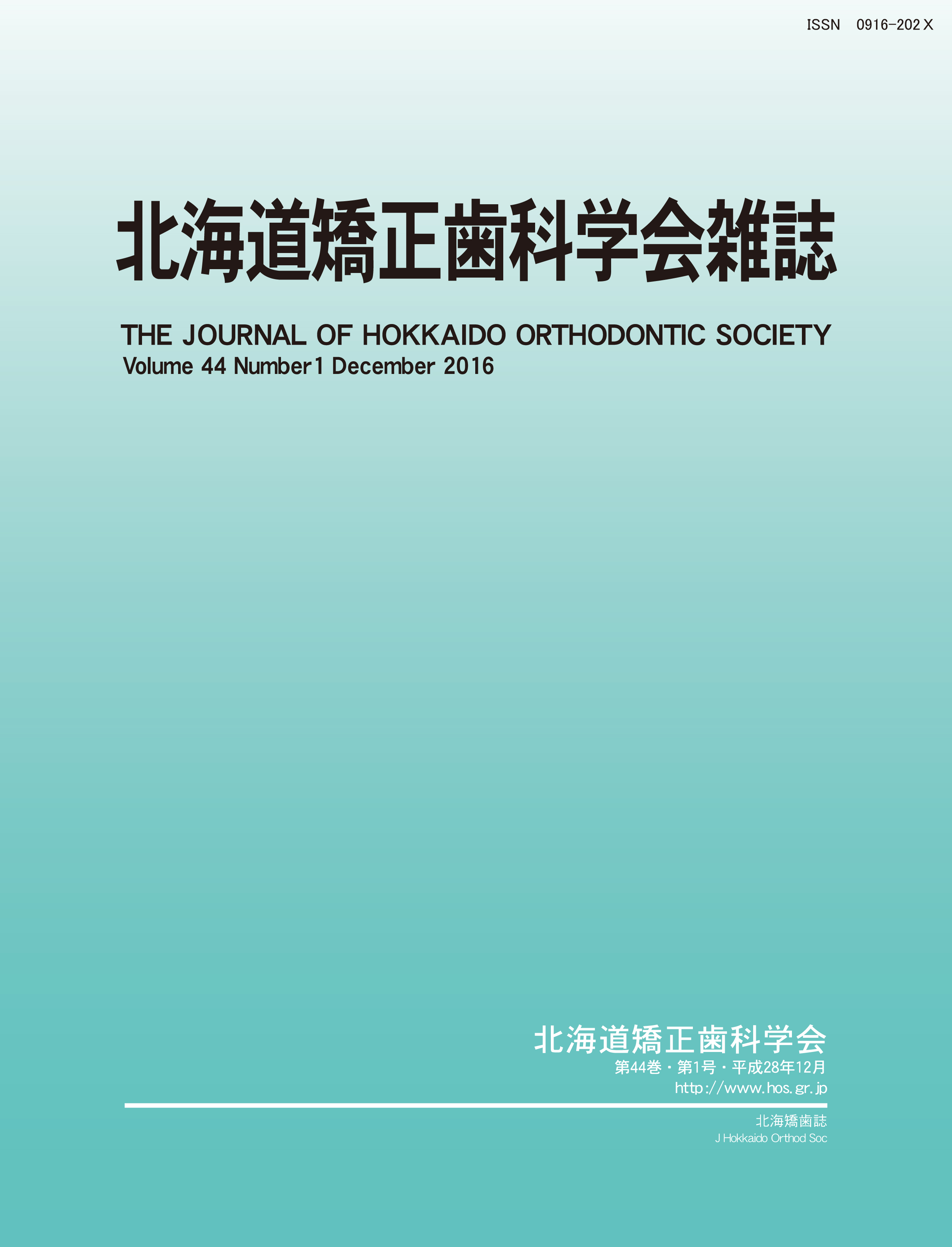All issues

Volume 50 (2022)
- Issue 1 Pages 1-
Volume 50, Issue 1
Displaying 1-1 of 1 articles from this issue
- |<
- <
- 1
- >
- >|
-
Nanae Yamazaki, Mami Muto, Ko Nakanishi, Takaaki Yamamoto, Emi Kikuchi ...2022 Volume 50 Issue 1 Pages 1-12
Published: 2022
Released on J-STAGE: March 06, 2023
JOURNAL OPEN ACCESSPermanent tooth agenesis is a relatively common congenital anomaly among patients seen at orthodontists. Congenital tooth agenesis could be associated with maxillofacial morphology, but there are few previous studies about this. If the number of missing teeth exceeds 10, there is a high possibility to miss the molar regions, possible that such severe tooth agenesis may have different effects on the maxillofacial morphology. To elucidate this, the present study aims to identify the pattern of missing teeth and its effect on maxillofacial morphology with severe congenital tooth agenesis. The characteristics of the missing pattern, and the maxillofacial morphology of 8 patients visited the Orthodontic clinic of the Hokkaido University Hospital with congenital tooth agenesis of 10 or more teeth were investigated using panoramic radiographs and cephalograms. In patients with congenital tooth agenesis of 10 or more teeth, the pattern of tooth absence showed a high frequency of missing maxillary lateral incisors and maxillary second premolars, followed by missing mandibular second premolars and second mandibular molars and mandibular central incisors. The frequency of missing first molars, which were considered to be stable with a low frequency of being lost, was also high. In measurements on maxillofacial morphology, the maxilla was in a retruded position, but no consistent trend was observed in the mandible. But the anteroposterior position of the maxilla and mandible showed Class Ⅲ in many cases. The ramus inclination is anteriorly inclined, but the gonial angle is large in some cases. It can be inferred that patients with congenital tooth agenesis, especially extending to the molars, may also have affected the mandibular morphology.View full abstractDownload PDF (342K)
- |<
- <
- 1
- >
- >|